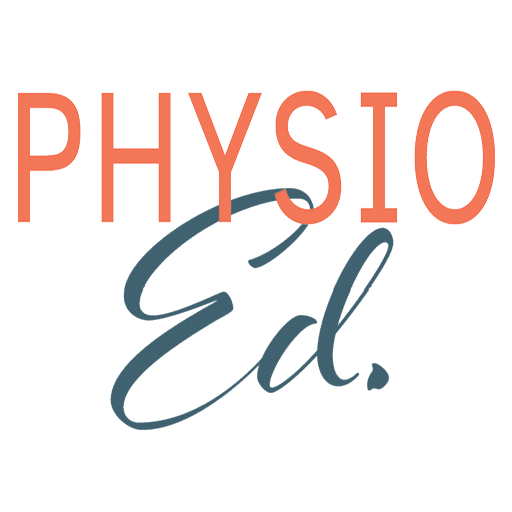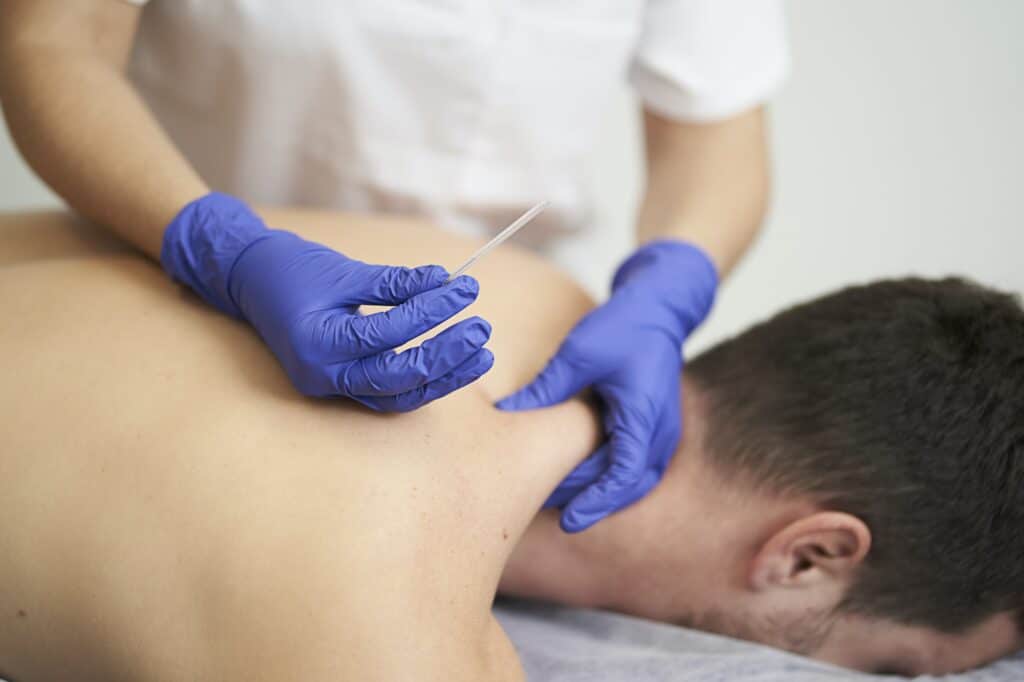You may have heard the term dry needling or read about how it can reduce pain. But what exactly is dry needling, and how does it work?
In this article, we’ll explore this method, the difference between dry needling and acupuncture, the pros and cons of the treatment, and whether dry needling therapies might be right for you.
Dry Needling vs Acupuncture
Both acupuncture and dry needling involve the insertion of thin monofilament needles into the skin to relieve pain.
Acupuncture and dry needling use a similar method, but they are applied in different clinical settings by different types of healthcare professionals.
Dry needling, also known as trigger point dry needling, is a common clinical practice in Western Medicine. Acupuncture, which has roots in traditional Chinese medicine, is applied by a certified acupuncturist.
Practitioners of each procedure are credentialed differently, and dry needling is typically applied by credentialed physical therapists or medical doctors. Dry needling has undergone many systematic reviews and clinical trials, while acupuncture has been studied less extensively.
- Physical therapists use dry needling to target specific myofascial trigger points in a muscle to reduce muscle tension, increase blood flow to the area, and decrease pain.
- In acupuncture, sterile needles are applied along energy (or chi) meridians in the body in order to reduce pain.
Depending on the purpose of dry needling treatment, needles can be inserted for up to thirty minutes, while in acupuncture, they are usually inserted and left in the body for thirty minutes or more.
How Does Dry Needling Work?
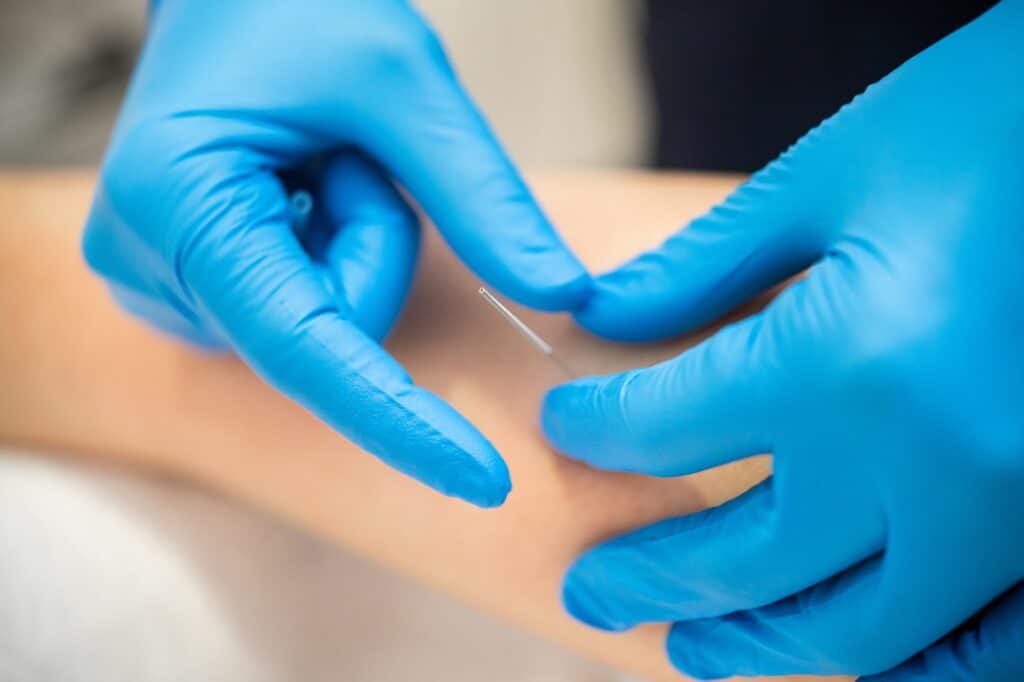
The word myofascial has roots in the Latin terms myo, which refers to muscle, and fascia, which refers to the connective tissue surrounding the muscle.
During treatment, your physical therapist inserts a small sterile needle into a myofascial trigger point (or point of tension) to relax tight tissues in and around the injured muscle.
Needling is helpful for treating both smaller and larger muscle groups with myofascial trigger point pain. It also stimulates the release of naturally occurring endorphins, which, similarly to opioids, aid in pain relief.
Dry needling has been shown to increase joint range of motion and blood flow to muscle while decreasing acute or chronic tension and pain.
Who Can Do Dry Needling?
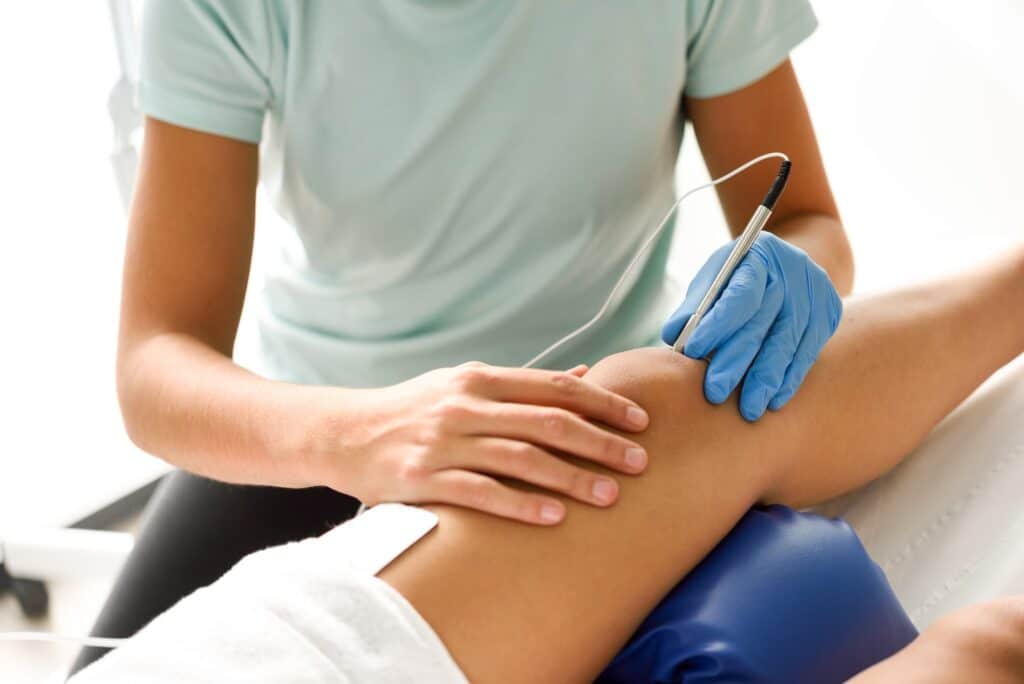
Licensed physical therapists and other approved healthcare providers use trigger point dry needling as an effective treatment for patients with muscular and connective tissue pain.
Dry needling can help patients with many different medical conditions and diagnoses. Dry needling works to relieve:
- Many specific forms of musculoskeletal pain (in the neck, back, or shoulders for example)
- Myofascial pain syndrome and headaches
- Movement impairments, sports injury, tendon or muscle strains, or spasms
- Sciatica, osteoarthritis, or other nerve and joint-related issues
Dry needling is not recommended for patients who are fearful of needles, elderly and frail patients, or those who are unable or unwilling to give consent for any reason.
People with a high infection risk or a history of abnormal bleeding or cellulitis should also avoid dry needling.
Your physical therapist will work with you to determine whether dry-needling therapies are appropriate for your body and whatever conditions you may be experiencing.
Treatment Techniques and What to Expect During Dry Needling
The treatment process is typically the same regardless of the area being treated. Your physical therapist will first make sure that you are comfortable on a treatment table, and they will clearly explain the process to you to ensure you understand how it works.
They will carefully feel your muscles to locate any areas of pain or tightness before inserting a clean, dry needle into your skin. Physical therapists use needle palpation to identify different tissues with the tip of each solid filament needle to identify appropriate treatment areas.
Dry needling may be used on ligaments, tendons, muscle or scar tissue, or even the outer layer of bone.
Techniques for trigger point dry needling
The pistoning technique involves quickly inserting, then removing a needle multiple times. Muscle twitch during pistoning means they have discovered an active trigger point that will release leading to pain relief.
Conversely, your physical therapist may passively leave the needle in a muscle trigger point for up to thirty minutes in order to relieve pain at your trigger points. They may also rotate the needle while it is in your skin to affect a larger area.
Research suggests that both are valid techniques shown to be effective treatments for trigger point release and pain relief.
Dry needling will be performed at the beginning or end of your physical therapy session depending on the goal of your treatment session. Oftentimes your treatment will include a combination of therapeutic exercises, dry needling, and other manual therapy techniques.
Immediately after dry needling, your physical therapist will recommend applying careful stretching or heat therapy to the area to aid in the recovery process. You should avoid putting a cold pack on the treatment area or using anti-inflammatories as both will decrease the effectiveness of the needling session.
Risks and Side Effects
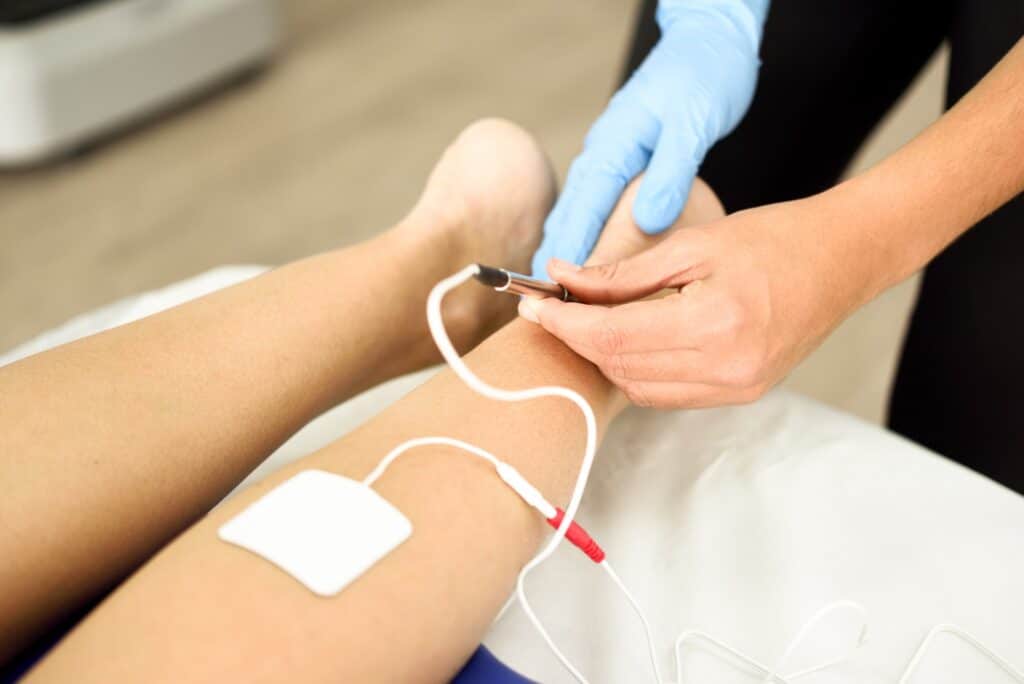
While healthcare professionals are certified to perform dry needling using research-backed treatment guidelines, some adverse side effects might be expected, but risks are minimal compared to the pain relief and improved quality of life for patients.
Bruising and bleeding are common side effects, but both are normal, natural reactions that will resolve as with any other minor cut or bruise.
After a session, you might also feel some muscle soreness or fatigue, similar to the effects of strenuous exercise. Muscle soreness or discomfort usually resolves within 24-48 hours.
Your therapist will use their extensive understanding of anatomy to avoid sensitive tissues. Dry needling practitioners are thoroughly trained to avoid certain areas around the neck, nerves, and organs in order to prevent injury to deeper body parts.
Lastly, your body might react with unexpected physical or emotional responses, including sweating, nausea, feeling faint, or even crying, as a result of sudden pain relief.
While reactions like these reactions are rare, they have occurred, and your PT will take every measure to ensure your safety and security throughout the process.
Other PT Treatments for the Same Conditions
The long-term effects of dry needling are still being studied, but there are a number of other physical therapy treatments for many of these conditions.
In the event that your healthcare provider determines that dry needling is not right for you, other effective treatments to consider might include:
- Noninvasive treatments include massage, stretching, compression or laser therapy, heat, acupressure, ultrasound, and medication.
- Invasive procedures like surgery, steroid injections, application of nerve blocks, or device implantation
There are various methods of treating pain in each of these categories, and the best method of pain intervention for you depends on your history, personal needs, and safety. Talk to your doctor or your physical therapist to determine the best possible treatment option for your pain.
Trigger-point dry needling can decrease your pain and improve your quality of life. Research has shown dry needling to be effective in managing and reducing short-term pain and muscle trigger point sensitivity. Studies about long-term effects are ongoing.
If you want to understand your pain, consult with your healthcare provider today. Your doctor or physical therapist is the first stop on the path to determining whether dry needling might be the right choice for you.
Key Takeaways
- Dry needling and acupuncture both involve inserting thin needles into the skin to relieve pain, but they differ in practice, application, and professional background.
- Dry needling is a common practice in Western medicine. Physical therapists or medical doctors apply it to target specific myofascial trigger points in muscles, increasing blood flow, reducing tension, and decreasing pain.
- Acupuncture, rooted in traditional Chinese medicine, involves inserting sterile needles along energy meridians to balance energy flow and reduce pain, typically performed by certified acupuncturists.
- Dry needling can help treat musculoskeletal pain, myofascial pain syndrome, movement impairments, sports injuries, sciatica, osteoarthritis, and other nerve and joint issues.
- Dry needling is not suitable for patients fearful of needles, elderly and frail patients, those unable or unwilling to give consent, or individuals with high infection risk, abnormal bleeding history, or cellulitis.
- The treatment involves inserting sterile needles into areas of muscle tension or trigger points, sometimes using techniques like pistoning or passive needling to release trigger points and relieve pain.
- Post-treatment care includes careful stretching or heat therapy to aid recovery and avoiding cold packs or anti-inflammatories to maintain treatment effectiveness.
- Common side effects of dry needling include bruising, bleeding, muscle soreness, and fatigue, which typically resolve within 24-48 hours; rare reactions like sweating, nausea, or emotional responses might also occur.
- Other physical therapy treatments for similar conditions include massage, stretching, compression, laser therapy, heat, acupressure, ultrasound, medication, surgery, steroid injections, nerve blocks, or device implantation.
- Always consult a healthcare provider to determine the best treatment option for your specific pain and condition.
FAQs
What is dry needling?
Dry needling is a technique used by physical therapists and medical doctors where thin monofilament needles are inserted into specific myofascial trigger points in muscles to relieve pain, increase blood flow, and reduce muscle tension.
How does dry needling differ from acupuncture?
While both dry needling and acupuncture involve inserting thin needles into the skin to relieve pain, dry needling is a Western medical practice targeting specific muscle trigger points, whereas acupuncture is a traditional Chinese medicine technique focusing on balancing energy flow along meridians.
What conditions can dry needling help treat?
Dry needling can help treat various conditions, including musculoskeletal pain, myofascial pain syndrome, headaches, movement impairments, sports injuries, tendon or muscle strains, spasms, sciatica, osteoarthritis, and other nerve and joint-related issues.
Who should avoid dry needling?
Dry needling is not recommended for individuals who are fearful of needles, elderly and frail patients, those unable or unwilling to give consent, or individuals with a high infection risk, abnormal bleeding history, or cellulitis.
What should I expect during a dry needling session?
During a dry needling session, a physical therapist will insert sterile needles into areas of muscle tension or trigger points. Techniques like pistoning (quick insertion and removal) or passive needling (leaving the needle in place) may be used to release trigger points and relieve pain.
What are the common side effects of dry needling?
Common side effects of dry needling include bruising, bleeding, muscle soreness, and fatigue, similar to the effects of strenuous exercise. These side effects usually resolve within 24-48 hours.
How should I care for the treatment area after a dry needling session?
After a dry needling session, it is recommended to apply careful stretching or heat therapy to the treatment area to aid recovery. Avoid using cold packs or anti-inflammatories, as they can decrease the effectiveness of the needling session.
What are alternative treatments to dry needling for similar conditions?
Alternative treatments to dry needling for similar conditions include noninvasive treatments such as massage, stretching, compression or laser therapy, heat, acupressure, ultrasound, medication, and invasive procedures like surgery, steroid injections, nerve blocks, or device implantation. Consult a healthcare provider to determine the best treatment option for your pain and condition.
References
- Boyce, D., Wempe, H., Campbell, C., Fuehne, S., Zylstra, E., Smith, G., Wingard, C., & Jones, R. (2020). Adverse events associated with therapeutic dry needling. International Journal of Sports Physical Therapy, 15(1). 103-113. https://pubmed.ncbi.nlm.nih.gov/32089962/
- Gattie, E., Cleland, J. A., & Snodgrass, S. (2017). The effectiveness of trigger point dry needling for musculoskeletal conditions by physical therapists: A systematic review and Meta-analysis.
- Journal of Orthopaedic & Sports Physical Therapy, 47(3). 133-149. https://doi.org/10.2519/jospt.2017.7096
- Kalichman, L. & Vulfsons, S. (2010). Dry needling in the management of musculoskeletal pain. Journal of the American Board of Family Medicine, 23(35). 640-646. https://doi.org/10.3122/jabfm.2010.05.090296


